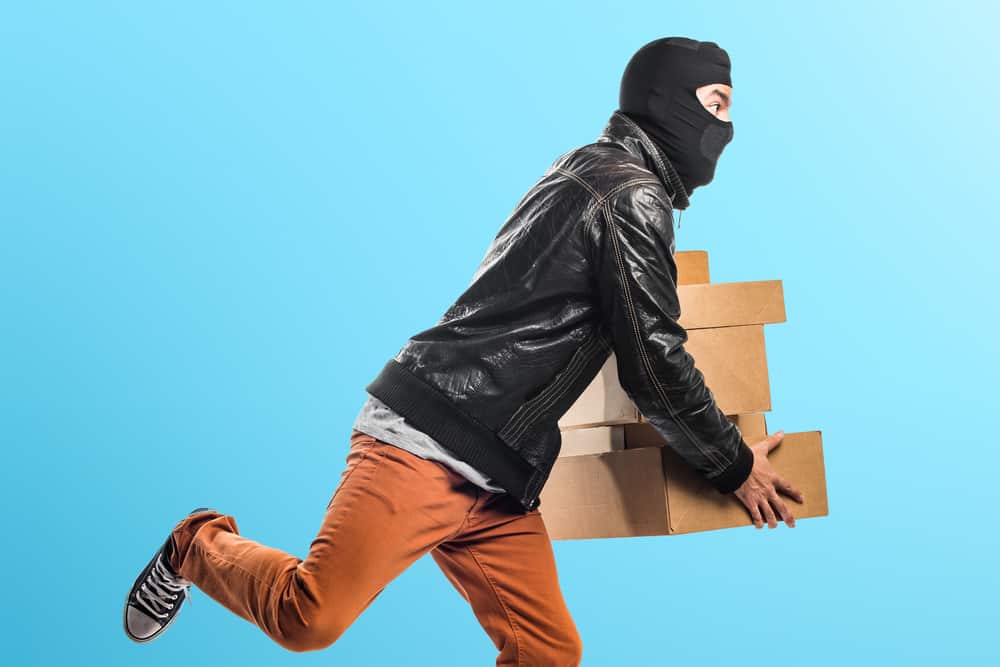
Ecommerce consumers, we have a problem. Home delivery is aggressively on the rise. That’s not a bad thing, but with that growing demand comes thieves exploiting an easy opportunity—packages by the millions left in front of doors.
Is it so much to ask that we have a relatively safe place for our packages?
That’s where BoxLock is an ingenious solution both for it simplicity and complexity: a “smart” padlock designed to protect deliveries from porch pirates.
How can something so small—a lock—be such a big deal? For two very significant reasons: (1) the absolute explosiveness of ecommerce; and (2) the special place this itty bitty IoT lock has within the industry.
First, what’s going on in ecommerce? Americans are increasingly receiving more packages and home deliveries than ever before. Online grocery sales are predicted to capture 20% of total grocery retail by 2025 to reach $100 billion in consumer sales, according to study by the Food Marketing Institute conducted by Nielsen. U.S. E-Commerce Shipments are expected to grow 40% from 2017 to 2021. Outsourced healthcare logistics is expected to grow from an $85 billion market to $105 billion by 2021, driving home health care opportunities that require a vast residential network for secured deliveries.
So how does BoxLock fit into this equation? The company just launched in July and is already protecting deliveries across carriers in over 2% of the 42,000 zip codes in the U.S., and in 48 states with concentrations in major metro areas that align closely with Amazon’s Prime Now cities. In fact, they launched exclusively on Amazon as part of Amazon’s Prime Day Launches program, and they sold out on the first day.
That’s all fine and dandy, but here’s a real differentiator: they’re also the only national available solution that works with all U.S. major carriers.
CEO Brad Ruffkess tells FreightWaves, “Basically, there are three different types of solutions out there. There are off-premise solutions like lockers, but you gotta go somewhere to pick it up. The second is monitoring solutions like cameras that can tell you what’s going on, but can’t actually protect the package. The third is like Latch and Amazon Key, but they are single carrier solutions. Over time, we may see the evolution of the product locker room. Eventually, you’ll have add-ons and houses that are customized for packages. We represent the fourth.”
“The beauty of the padlock today allows for an enormous amount of flexibility for consumers to find certified package lockers that can fit the very diverse set of needs that are the homes and businesses in America,” Ruffkess says.
In fact, consumers do have a high set of expectations. Research shows that regardless of the package size delivered, they want it protected. They also want to eliminate the need for stacking packages on a porch or sitting packages in front of a door to an apartment.
At the same time, they want to eliminate the need for a delivery driver to enter a home or apartment. While many, especially among millennials, are willing to pick up at nearby retail stores, it definitely requires an extra step. Consumers also want to allow groceries to be delivered and stored in a temperature-controlled container. They want security so that high-value merchandise like watches and jewelry can be delivered safely. Many want easier means for the “reverse logistics” side of things.
“Basically, there are three different types of solutions out there…we represent the fourth.”
While no single solution can account for everything, BoxLock is designed to secure deliveries for the customer while being respectful of the carriers’ valuable time. Using a built-in barcode scanner, BoxLock scans the tracking number on deliveries, validating them in real-time, then giving the driver access, without the need for any additional service hardware, software, labels or codes. In milliseconds, BoxLock connects to the internet to confirm access should be granted, creating real-time access logs that can be used to prevent theft and fraud. The recipient can open Boxlock to retrieve their deliveries with the iOS or Android app.
In fact, we’ve seen it in action at the Transparency18 event where they won Best in Show.
So things are exploding and BoxLock has a special place in the hearts and minds of couriers. What’s the problem?
Here’s a few nuggets: One in every 20 online orders are not delivered on the first attempt, costing U.S. carriers an average of $16.58 each or $5 billion per year. The industry has a term for losses attributable to theft, error, or fraud. It’s called shrinkage, and it costs retailers nearly $47 billion last year, according to the National Retail Federation. A recent study also showed that 26 million Americans have holiday packages stolen by these so-called porch pirates.
Ruffkess says their goal right now is simply to protect as many deliveries as possible. “75 million single family homes out there and we want to make sure their deliveries are there reliably. The problem and the opportunity is only going to get bigger,” he adds.
BoxLock is also developing a realm of subscription applications across a range of industry needs.
In addition to courier feedback and support, BoxLock is also a member of Blockchain in Transport Alliance (BiTA) to help ensure that the necessary specifications are in place for BoxLock to add additional blocks to the chain. Secure pickups and deliveries are always a priority when BoxLock’s are used in transport. BoxLock also hopes to leverage the blockchain for guidance to whom it should provide access and when.
BoxLock will be on Shark Tank’s season debut on October 7 at 10 p.m. That’s all we’re allowed to say until the episode has run.







